& Construction

Integrated BIM tools, including Revit, AutoCAD, and Civil 3D
& Manufacturing

Professional CAD/CAM tools built on Inventor and AutoCAD

Integrated BIM tools, including Revit, AutoCAD, and Civil 3D

Professional CAD/CAM tools built on Inventor and AutoCAD
Export the model from Civil 3D to finish the drainage network in InfoDrainage.
Type:
Tutorial
Length:
4 min.
Tutorial resources
These downloadable resources will be used to complete this tutorial:
Transcript
00:03
After you have used the surface to create the pipe network structure and catchment data in Civil 3D,
00:09
the next task is to export the model to InfoDrainage using the InfoDrainage add-on,
00:14
which comes with the Ultimate version of InfoDrainage.
00:17
First, save the file as Initial Model.
00:20
Next, on the ribbon, click the Innovyze tab and in the Import/Export panel,
00:26
click Export to InfoDrainage.
00:30
In the Export to InfoDrainage wizard, click Select, and then in the Save As dialog,
00:36
browse to and pick the folder where you would like to save the exported InfoDrainage file.
00:41
Click Save.
00:44
Then, back in the wizard, click Next.
00:47
On the Select Networks and Surfaces page,
00:50
select the Networks you would like to export.
00:53
In this case, select Storm1.
00:55
Then, expand the drop-down and select Do not export a surface.
00:59
For this example, the surface data is already available in InfoDrainage.
01:04
However, if you know that you need to include the surface, you could select it here or create one.
01:09
Click Next.
01:11
In the Parts Mapping Manager, on the Connection Mappings tab,
01:15
enter “100” in the Diameter/Width (mm) field.
01:19
Then, click the Junction Mappings tab, and enter a Diameter/Length (m) of 1.2.
01:25
Click Finish.
01:27
Be aware that these properties will be changed to be more precise in InfoDrainage,
01:32
so they do not need to be exact here.
01:35
Once the file has finished the export process, you can open the model in InfoDrainage.
01:40
Once it is there, best practice is to investigate any validation errors first,
01:46
before you make any other changes.
Video transcript
00:03
After you have used the surface to create the pipe network structure and catchment data in Civil 3D,
00:09
the next task is to export the model to InfoDrainage using the InfoDrainage add-on,
00:14
which comes with the Ultimate version of InfoDrainage.
00:17
First, save the file as Initial Model.
00:20
Next, on the ribbon, click the Innovyze tab and in the Import/Export panel,
00:26
click Export to InfoDrainage.
00:30
In the Export to InfoDrainage wizard, click Select, and then in the Save As dialog,
00:36
browse to and pick the folder where you would like to save the exported InfoDrainage file.
00:41
Click Save.
00:44
Then, back in the wizard, click Next.
00:47
On the Select Networks and Surfaces page,
00:50
select the Networks you would like to export.
00:53
In this case, select Storm1.
00:55
Then, expand the drop-down and select Do not export a surface.
00:59
For this example, the surface data is already available in InfoDrainage.
01:04
However, if you know that you need to include the surface, you could select it here or create one.
01:09
Click Next.
01:11
In the Parts Mapping Manager, on the Connection Mappings tab,
01:15
enter “100” in the Diameter/Width (mm) field.
01:19
Then, click the Junction Mappings tab, and enter a Diameter/Length (m) of 1.2.
01:25
Click Finish.
01:27
Be aware that these properties will be changed to be more precise in InfoDrainage,
01:32
so they do not need to be exact here.
01:35
Once the file has finished the export process, you can open the model in InfoDrainage.
01:40
Once it is there, best practice is to investigate any validation errors first,
01:46
before you make any other changes.
After the surface has been used to create the pipe network structure and catchment data in Civil 3D, the next task is to export the model to InfoDrainage using the InfoDrainage add-on, which comes with the Ultimate version of InfoDrainage.
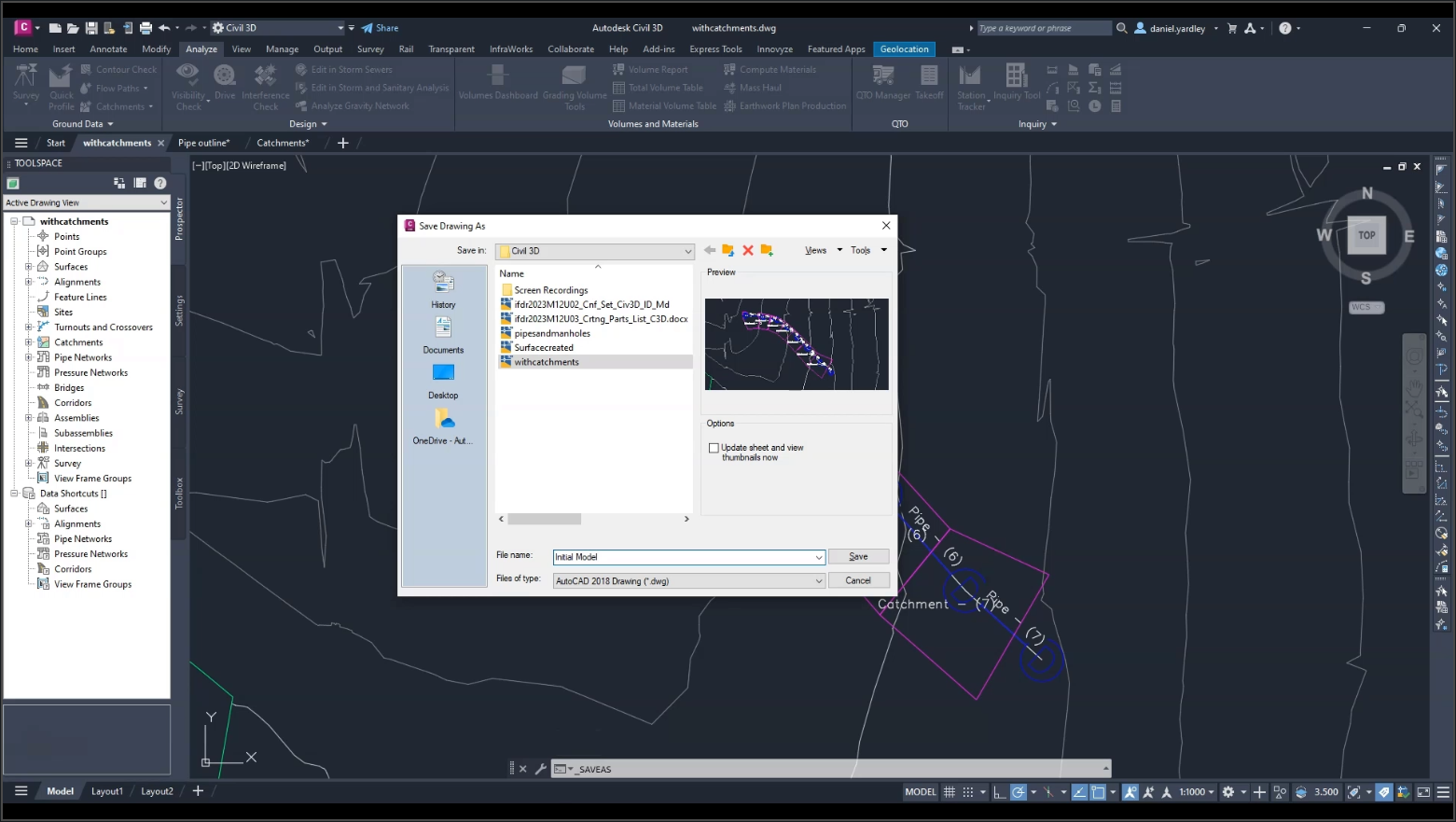
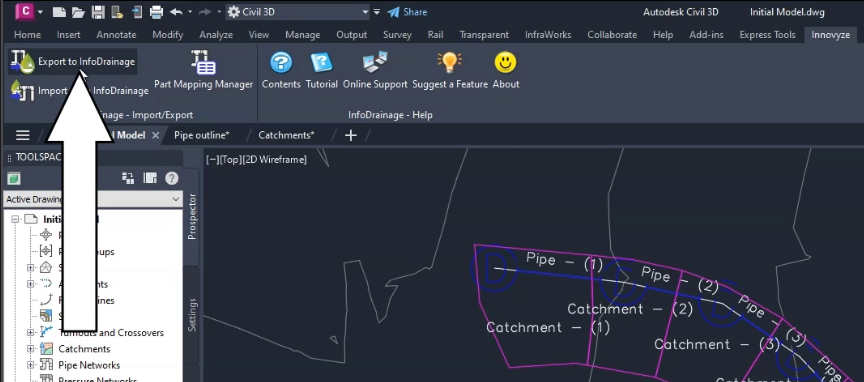
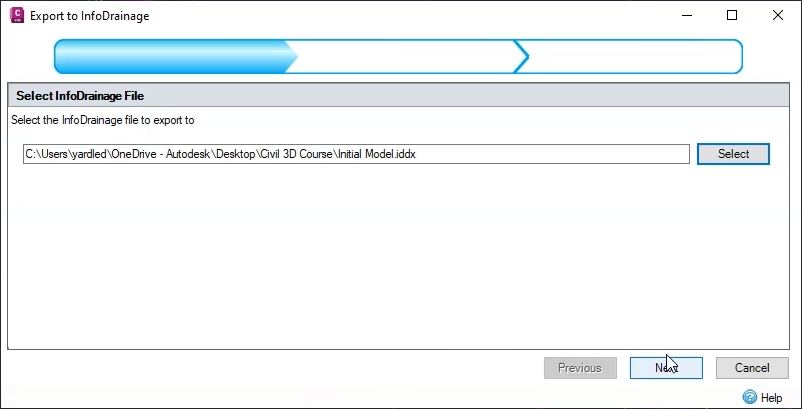
IMPORTANT: For this example, the surface data is already available in InfoDrainage. However, if you know that you need to include the surface, you could select it here or create one.
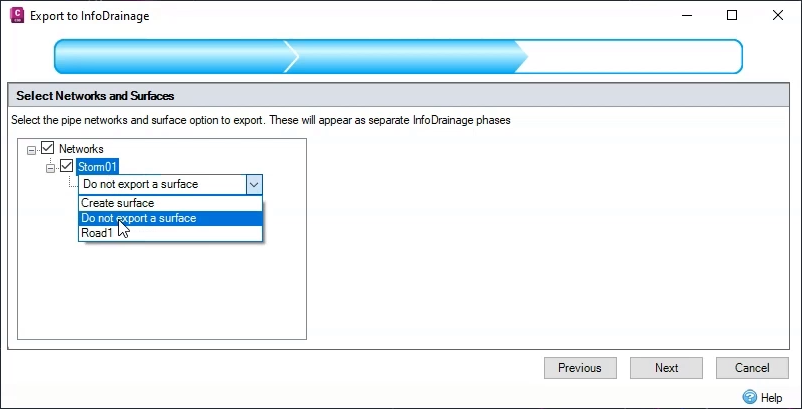
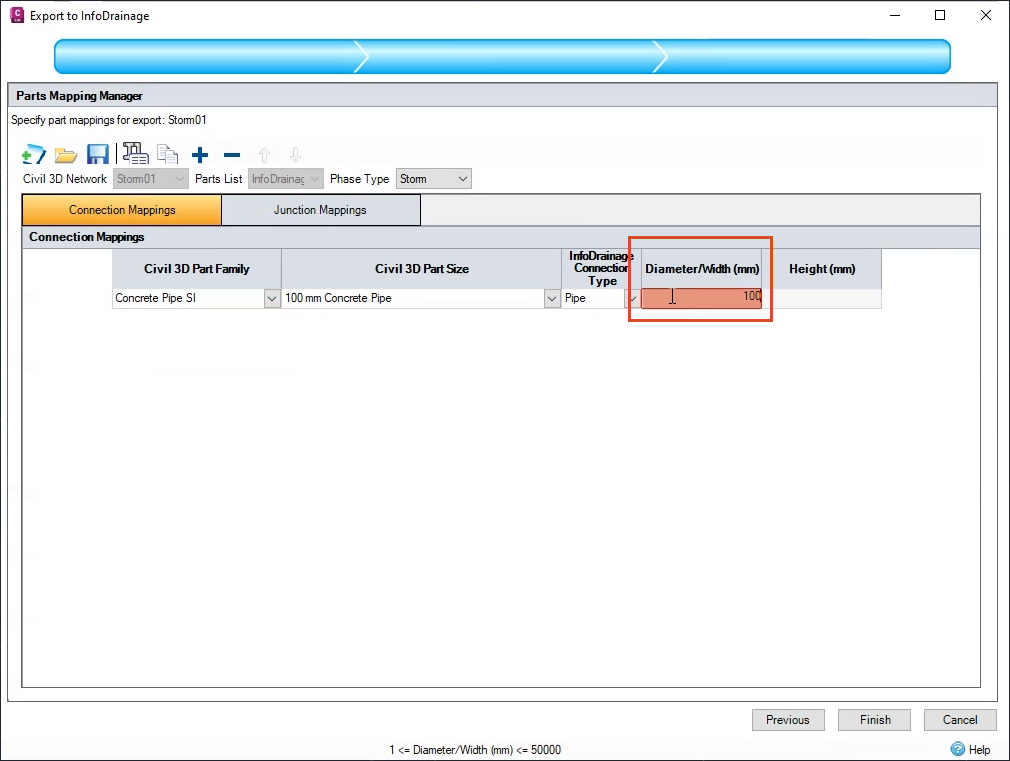
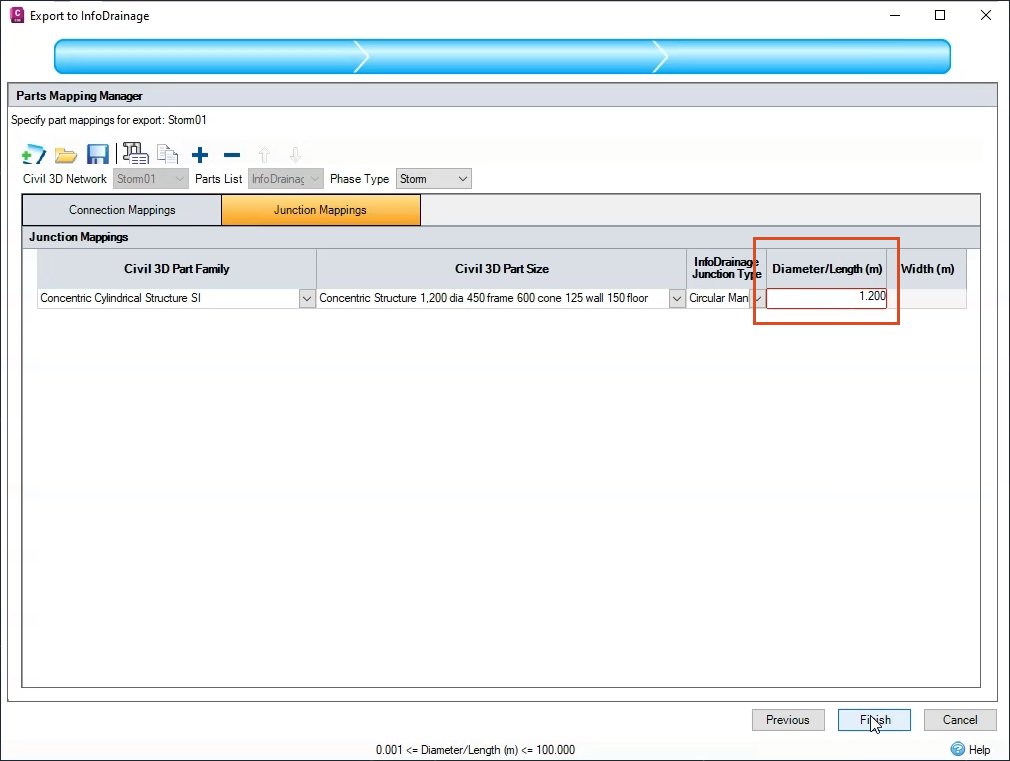
IMPORTANT: The Connection Mappings and Junction Mappings properties will be changed to be more precise in InfoDrainage, so they do not need to be exact here.
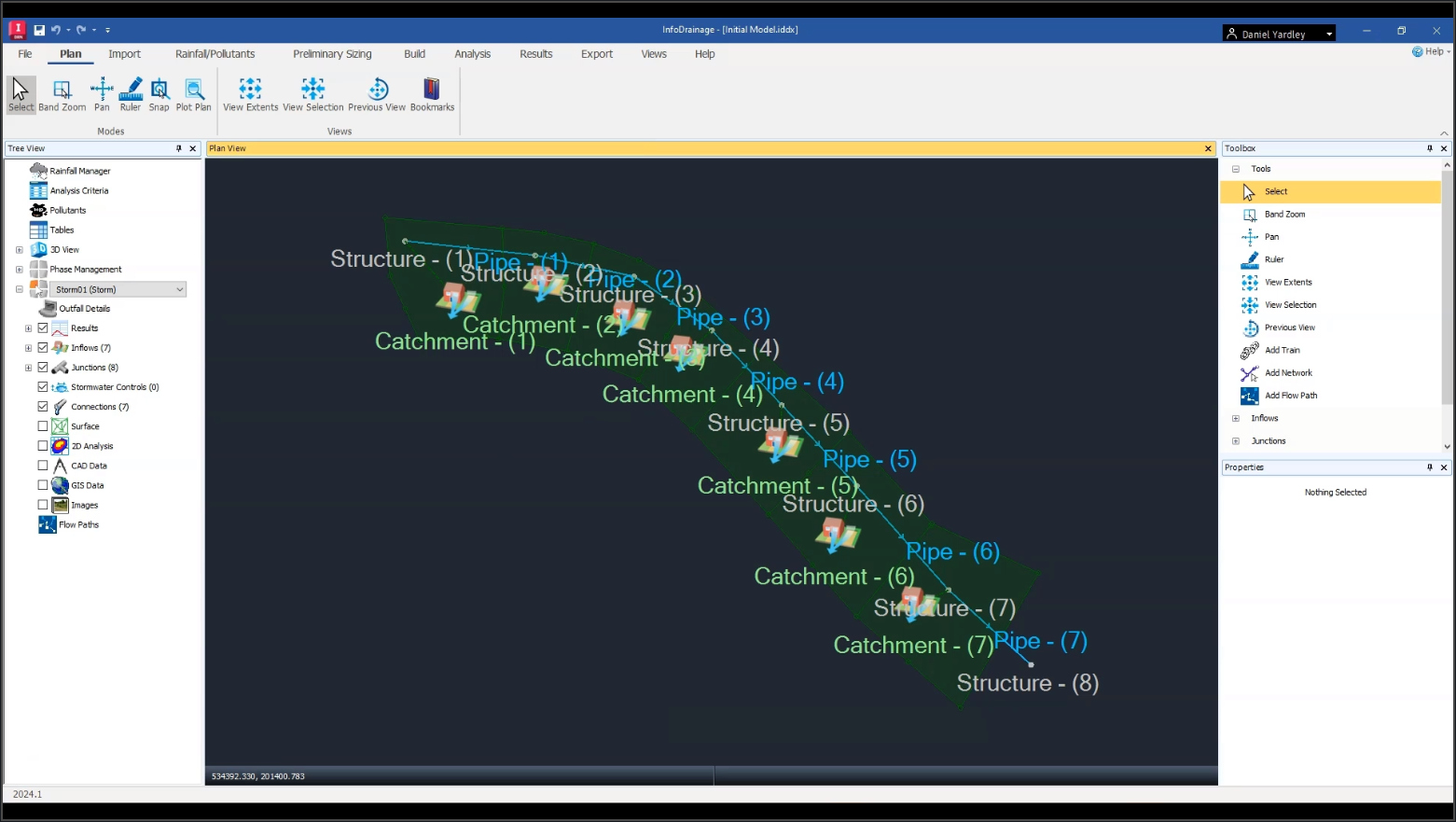
Note: Best practice is to investigate any validation errors first, before you make any other changes to the model in InfoDrainage.
Industry:
Role:
How to buy
Privacy | Do not sell or share my personal information | Cookie preferences | Report noncompliance | Terms of use | Legal | © 2025 Autodesk Inc. All rights reserved
Sign in for the best experience
Save your progress
Get access to courses
Receive personalized recommendations
May we collect and use your data?
Learn more about the Third Party Services we use and our Privacy Statement.May we collect and use your data to tailor your experience?
Explore the benefits of a customized experience by managing your privacy settings for this site or visit our Privacy Statement to learn more about your options.